Protecting bird nests from crows is essential to ensure the survival and breeding success of vulnerable bird species. Crows are known to nest predators, and their raids can have a significant impact on bird populations.
It is our duty to protect the birds’ nest, at least to try. We can take some effective preventive measures that are crucial in mitigating the risk and providing a safe environment for nesting birds.
However, you must be thinking about what you can actually do to protect those bard nests, right? If yes, please read this article till the end. Today’s discussion will follow the topic from scratch.
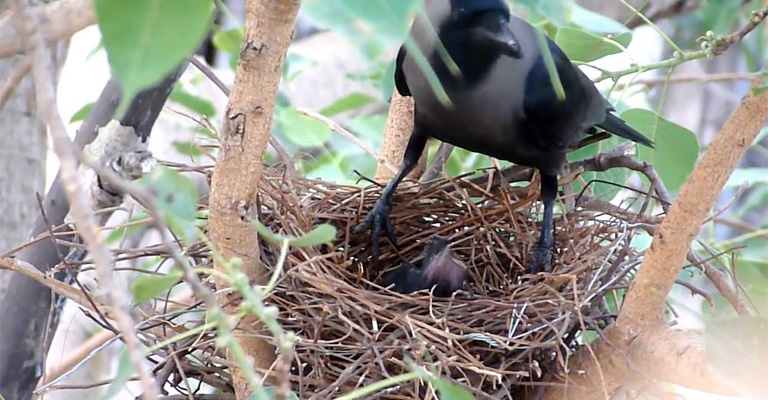
Behavior of Crows
Understanding the behavior of crows is essential to get why they raid the bird’s nest. Here are some essential facts that will definitely surprise you.
Why Crows Raid Bird Nests
Crows raid bird nests primarily to obtain food for themselves and their young. Eggs and chicks provide a valuable source of nutrition during the breeding season when crows are actively raising their own offspring.
By preying on the vulnerable nests of other bird species, crows can secure a readily available food source.
Insight Into Crow Intelligence and Adaptability
Crows are highly intelligent birds and exhibit problem-solving abilities. They can quickly learn and remember patterns, making it challenging to outsmart them with simple deterrents.
Their adaptability allows them to adjust their foraging techniques and exploit various food sources, including bird nests.
Crows have been observed using tools and collaborating with each other to overcome obstacles and obtain their desired prey.
Simply relying on a single method may not be sufficient given the intelligence and adaptability of crows.
By incorporating a combination of techniques specifically tailored to deter crows, bird enthusiasts can help safeguard the vulnerable nests of other bird species and promote avian conservation.
Predator Decoys
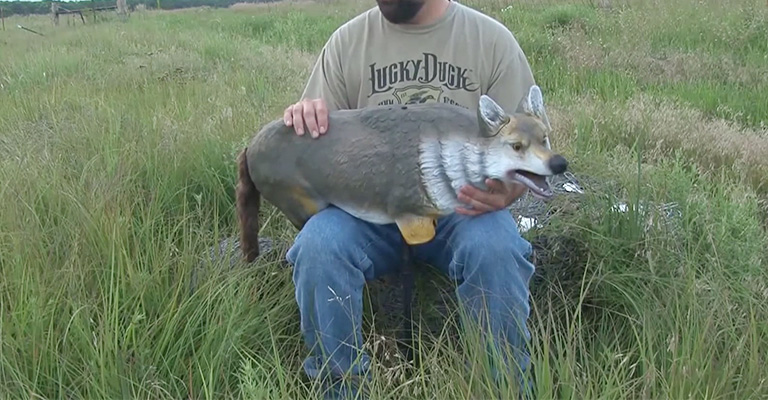
When it comes to protecting bird nests from crows, one effective measure is the use of predator decoys. By strategically placing decoys resembling natural predators like owls or hawks near the nest, it triggers the crows’ natural fear response.
Using Decoys
Predator decoys serve as visual deterrents that mimic the presence of natural predators. Crows have evolved to be wary of these predators, as they pose a potential threat to their safety.
Placing decoys in visible locations near the nest, creates the illusion that a predator is present, discouraging crows from approaching.
Functions of the Decoys to Deter Crows
Crows have a keen sense of observation and recognize potential dangers in their surroundings. When they see a predator decoy, it triggers their instinctive fear response.
The sight of an owl or hawk decoy can intimidate crows, as they perceive it as a threat to their own safety or the safety of their young.
As a result, they are more likely to avoid the area and seek alternative food sources, reducing the risk of nest predation.
Utilizing predator decoys as a preventive measure requires careful placement and occasional repositioning to maintain their effectiveness.
It’s important to note that crows can eventually become habituated to stationary decoys, so periodically moving or adjusting their position can help maximize their deterrent effect.
By incorporating predator decoys into your protective measures, you create an environment that dissuades crows from targeting bird nests, increasing the chances of successful breeding and nesting for other bird species.
Shiny Objects

Another effective method to protect bird nests from crows is by using shiny objects. Hanging reflective items around the nest can startle and discourage crows from approaching.
Hanging Reflective Items Around the Nest:
Crows are visually oriented birds, and they are often attracted to shiny or reflective objects. By strategically placing these items near the nest, you create a visual deterrent that disrupts their approach.
The reflective surfaces catch the sunlight, creating flashes and movements that can startle and confuse the crows, making them wary of the area.
Effectiveness of Shiny Objects to Get Rid of Crows
There are various types of shiny objects that can be utilized to deter crows. These can include aluminum foil strips, CDs, or reflective tape. Hang them in close proximity to the nest, ensuring that they move freely in the wind and reflect light effectively.
When crows approach the nest and catch sight of these shiny objects, the sudden flashes and unpredictable movements create an element of surprise, scaring them away.
The unfamiliar and potentially threatening stimuli provided by these shiny objects can make crows think twice before attempting to raid the nest.
It’s important to periodically check and maintain the shiny objects, as their effectiveness may diminish over time due to weathering or habituation by the crows.
By incorporating shiny objects as part of your protective measures, you add an extra layer of visual deterrence that can help safeguard bird nests from crow predation.
Bird Netting
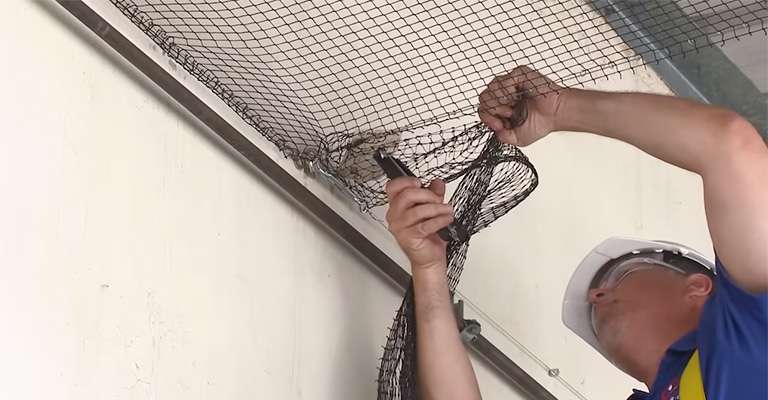
Bird netting is an important tool for physically blocking crows’ access to bird nests. It provides a barrier that prevents crows from reaching the nest and protects the vulnerable eggs and chicks.
Importance of Using Bird Netting
Bird netting serves as a physical barrier that effectively denies crows access to the nest. Unlike visual deterrents, netting creates a tangible obstacle that prevents the crows from reaching the nest and causing harm.
It acts as a reliable and comprehensive solution to deter crows, reducing the risk of nest predation.
Installing Netting to Avoid Entanglement and Harm to Other Birds
When installing bird netting, it is crucial to ensure its proper placement to avoid any potential harm to both the birds in the nest and other bird species in the vicinity.
Here Are Some Guidelines to Follow:
Choose the right netting
Use a bird netting specifically designed for protecting bird nests. Ensure that the mesh size is small enough to prevent crows from accessing the nest, while still allowing the target bird species to pass through.
Properly secure the netting
Install the netting securely around the nest area, creating a barrier that extends above and around the entire nest structure. Use sturdy supports such as poles or hooks to keep the netting taut and prevent it from sagging or collapsing.
Ensure adequate ventilation
While the netting needs to be secure, it’s important to allow for proper ventilation to maintain a healthy environment for the birds. Ensure that there is sufficient airflow through the netting to prevent overheating or suffocation.
Regularly monitor and adjust
Periodically inspect the netting to ensure that it remains intact and properly installed. Adjustments may be necessary as the birds grow or as environmental conditions change.
By following these guidelines, you can effectively utilize bird netting to protect bird nests from crows without causing harm to the birds or disrupting the surrounding ecosystem.
Bird netting provides a physical barrier that can significantly reduce the risk of nest predation and support the successful breeding and nesting of other bird species.
Construction of Birdhouses
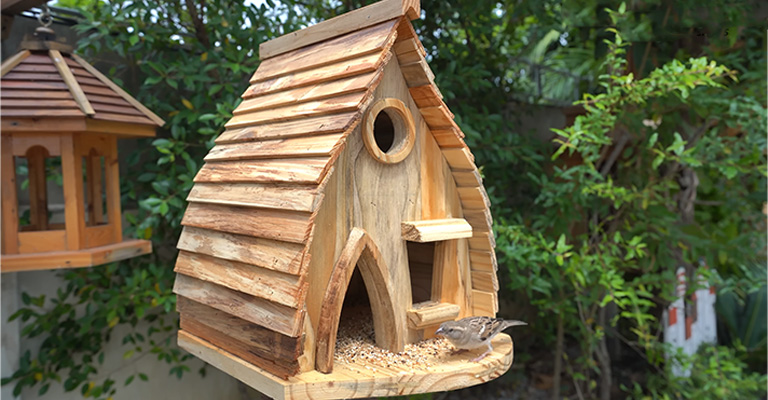
Building birdhouses can be a proactive and effective measure to protect nests from crows. Birdhouses provide a safe and secure alternative nesting site for birds, reducing their vulnerability to predation.
Benefits of Building Birdhouses to Protect Nests
Birdhouses offer several benefits in terms of nest protection. By providing a designated nesting space, they can divert birds away from vulnerable areas that may be targeted by crows.
Birdhouses also offer a controlled environment, shielding nests from direct view and making them less accessible to predators. Additionally, birdhouses can attract a variety of bird species, fostering biodiversity and supporting overall bird populations.
Tips for Designing Birdhouses
When constructing birdhouses to deter crows, there are specific design considerations to keep in mind:
Entrance Hole Size
Make the entrance hole small enough to prevent crows from entering. Crows typically have larger bodies and require larger openings for access.
Research the target bird species’ requirements and design the entrance hole accordingly to allow entry only for desired birds.
Placement and Height
Position the birdhouse at a suitable height and location that is less accessible to crows. Mounting the birdhouse on a pole or post, or attaching it to a tree trunk, can help deter crows, as they prefer nesting sites that are easier to access.
Surrounding Vegetation
Encourage the growth of dense vegetation around the birdhouse. Crows are less likely to venture into areas with dense cover, as it restricts their movement and visibility. This natural barrier can further discourage their presence near the birdhouse.
Secure and Sturdy Construction
Ensure that the birdhouse is well-built and securely mounted to withstand potential attempts by crows to dislodge or damage it. Use durable materials and reinforce the structure to make it less susceptible to predation.
By designing birdhouses with small entrance holes and considering their placement, you can create a protected nesting environment that deters crows while providing a safe haven for desired bird species.
Birdhouses offer an effective and long-term solution for nest protection, supporting the conservation of bird populations and their successful breeding efforts.
Other Considerations
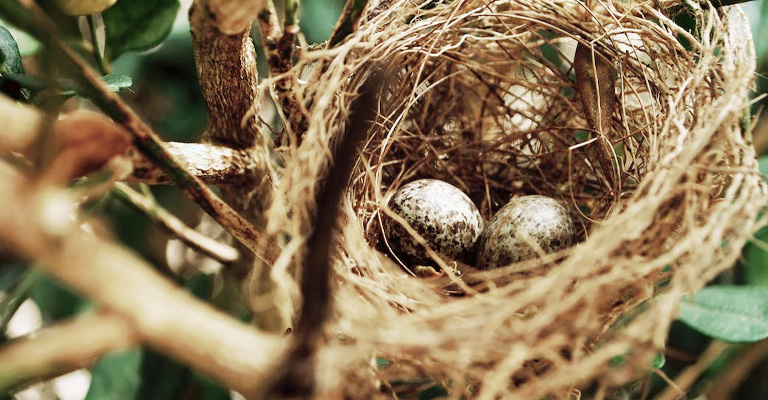
In addition to specific strategies aimed at deterring crows, there are other important considerations to protect bird nests effectively.
Maintaining a Clean and Clutter-free Environment Around the Nest
Maintaining a clean and clutter-free environment around the nest is crucial for nest protection. Remove any potential attractants that may entice crows, such as uncovered food sources or easily accessible garbage.
By eliminating these food incentives, you can discourage crows from lingering in the vicinity of the nest, reducing the chances of predation.
Encouraging Natural Deterrents
Natural deterrents can play a significant role in protecting bird nests from crows. Birds that choose to nest in dense vegetation or near other protective bird species can benefit from the presence of natural barriers and communal defense.
Crows are less likely to target nests that are well-hidden within thick foliage or near other bird species that exhibit aggressive behavior towards predators.
Encouraging native vegetation growth and providing suitable habitats for diverse bird species can help create an environment that deters crows naturally.
Monitoring and Adaptation
To effectively protect bird nests from crows, it is important to emphasize the need for ongoing observation and adaptation of protective measures. Crows are intelligent and adaptable creatures, and their behavior may change over time.
Therefore, it is essential to remain vigilant and flexible in your approach to nest protection.
Need for Ongoing Observation and Protective Measures
Regular monitoring of the nesting site is crucial to assess the effectiveness of the implemented strategies. Keep a close eye on the behavior of crows and their interactions with the protective measures.
Observe whether they are still attempting to access the nest or if they have been deterred. By closely monitoring the situation, you can identify any potential weaknesses in the protective measures and make necessary adjustments.
Flexibility and Essential Strategies
If the initial protective measures do not yield the desired results, it is important to be flexible and open to trying different strategies. Crows may adapt to certain deterrents over time, rendering them less effective.
In such cases, it may be necessary to experiment with new methods or combine multiple approaches to maximize nest protection.
This could involve changing the placement of decoys, adjusting the position of shiny objects, modifying netting, or exploring other innovative solutions.
Adapting to the behavior of crows requires patience and perseverance. It may take time to find the most effective combination of strategies that consistently deter crows and protect bird nests.
Comparative Analysis: Bird Nest Protection Strategies
| Protection Strategy | Description | Advantages | Limitations |
| Predator Decoys | Placing decoys, such as owls or hawks, near the nest | Triggers natural fear response in crows, discouraging their approach | May lose effectiveness over time as crows become habituated to the decoys |
| Shiny Objects | Hanging reflective items around the nest | Startles and confuses crows with flashes and movements | Effectiveness may diminish over time due to weathering or habituation |
| Bird Netting | Installing physical barriers to block crows’ access | Provides comprehensive protection, preventing direct contact with the nest | Requires careful installation to avoid entanglement and harm to other birds |
| Construction of Birdhouses | Building birdhouses as alternative nesting sites | Diverts birds away from vulnerable areas targeted by crows | Requires proper design to deter crows with small entrance holes |
| Clean Environment | Maintaining a clutter-free surroundings | Discourages crows from lingering near the nest | Does not provide direct physical protection |
| Natural Deterrents | Encouraging nesting in dense vegetation or near protective bird species | Utilizes natural barriers and communal defense | Relies on the presence and behavior of other bird species |
FAQs
It is important to check local laws and regulations regarding bird nest protection before implementing any measures. In some areas, certain bird species or their nests may be protected by law, and disturbing or interfering with them can be illegal.
Always ensure you are in compliance with local wildlife and conservation regulations.
Observing the behavior of crows around the nest can indicate their interest or potential predation attempts. Look for repeated visits, aggressive behavior, or attempts to access the nest.
If you notice signs of nest disturbance or evidence of predation, such as missing eggs or chicks, it is likely that crows are targeting the nest.
If a bird nest has been raided by crows, it is important to prioritize the safety and well-being of the remaining birds. While it may be disheartening, allow the nesting birds to recover and potentially rebuild their nest.
Implement preventive measures for future nesting attempts to minimize the risk of further predation.
Scare devices like noise makers or visual deterrents can be effective in some situations, but their effectiveness may vary depending on the crows’ adaptability.
Crows can become habituated to certain deterrents over time. It is recommended to combine multiple strategies and periodically change the deterrents to maximize their effectiveness.
Conclusion
For sure, protecting bird nests from crows requires a combination of preventive measures and ongoing observation. Strategies like using predator decoys, shiny objects, bird netting, and constructing birdhouses can help deter crows.
Maintaining a clean environment and encouraging natural deterrents also contribute to nest protection. Stay adaptable and vigilant for effective results in safeguarding vulnerable bird species.
Hopefully, you’ve got my points clearly. For any confusion, please inform us in the comment section. Thank you for your time.